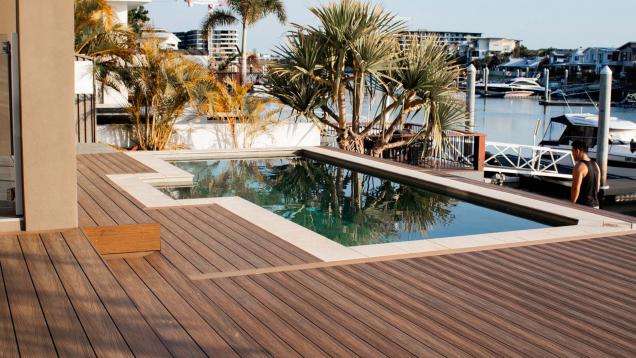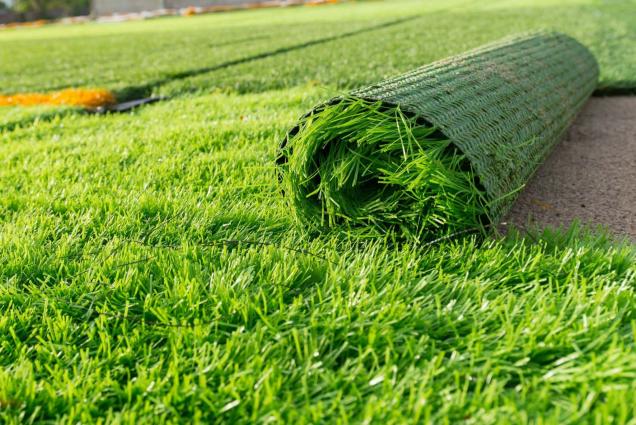
Laminate Flooring vs Hybrid Flooring: Pros & Cons Examined
Australian retailers offer a vast selection of flooring options, which can sometimes feel overwhelming for homeowners. As trusted hybrid flooring experts in Sydney, we encourage buyers to familiarize themselves with each type to ensure they select the most suitable surface for their indoor space.
Whether building or renovating, making an informed decision leads to a long-term investment that delivers value and satisfaction.
It’s common for homeowners to narrow their flooring choices to two or three options but still struggle to determine the best fit for their home. Comparing the various features of each can be a time-consuming and daunting task.
From our experience, those who decide against solid timber flooring often find themselves choosing between laminate and hybrid alternatives.
In this blog, we’ll break down the essentials of laminate and hybrid flooring, helping Australians make the right choice for their homes.
What Is Hybrid Flooring?
Hybrid flooring is a versatile composite flooring that combines the best features of laminate and luxury vinyl.
Designed to replicate the look of natural materials like hardwood or stone, it offers exceptional durability, waterproof properties, and low maintenance—making it a popular choice among Australian homeowners.
Hybrid flooring consists of four key layers:
Hybrid flooring offers several advantages, making it a practical choice for many homeowners:
While hybrid flooring has many benefits, there are some drawbacks to consider:
Laminate flooring is a multi-layered, wood-based flooring solution designed to replicate the look of natural timber.
It consists of four key layers:
Laminate flooring offers several advantages, making it an attractive option for many homeowners:
Despite its benefits, laminate flooring has some limitations:
When deciding between hybrid and laminate flooring, consider the following factors:
At Ezy Decking, we want our customers to make informed choices and get long-term value from their flooring investment. Below are the key similarities and differences between hybrid and laminate flooring to help homeowners decide with confidence.
Similarities
The choice between hybrid and laminate flooring isn’t about which is better—it’s about selecting the option that best suits your lifestyle, needs, and long-term goals.
For expert advice tailored to your home, contact us today. Ezy Decking’s trusted hybrid flooring specialists in Brisbane can assess your space, provide professional recommendations, and offer a detailed, upfront estimate that aligns with your needs and budget.
Whether building or renovating, making an informed decision leads to a long-term investment that delivers value and satisfaction.
It’s common for homeowners to narrow their flooring choices to two or three options but still struggle to determine the best fit for their home. Comparing the various features of each can be a time-consuming and daunting task.
From our experience, those who decide against solid timber flooring often find themselves choosing between laminate and hybrid alternatives.
In this blog, we’ll break down the essentials of laminate and hybrid flooring, helping Australians make the right choice for their homes.
What Is Hybrid Flooring?
Hybrid flooring is a versatile composite flooring that combines the best features of laminate and luxury vinyl.
Designed to replicate the look of natural materials like hardwood or stone, it offers exceptional durability, waterproof properties, and low maintenance—making it a popular choice among Australian homeowners.
Hybrid flooring consists of four key layers:
- Wear Layer: A transparent, protective coating that prevents fading, stains, and scratches.
- Decorative Layer: A high-definition printed design that mimics wood, stone, or other natural textures.
- Core Layer: A rigid, durable core made from either stone-plastic composite (SPC) or wood-plastic composite (WPC), providing stability, moisture resistance, and longevity.
- Backing Layer: An integrated underlay that enhances comfort underfoot and helps reduce noise.
Hybrid flooring offers several advantages, making it a practical choice for many homeowners:
- Low Maintenance: No need for frequent sealing or polishing—regular sweeping, vacuuming, or mopping keeps hybrid floors looking their best.
- Waterproof: Designed to withstand spills and moisture, hybrid flooring prevents water damage and maintains its structural integrity.
- Highly Durable: Resistant to scratches, dents, and stains, hybrid flooring is ideal for high-traffic areas and busy households.
- Easy Installation: Featuring a user-friendly click-lock system, hybrid flooring can be installed with minimal tools and no adhesives.
- Climate Resilience: Engineered to withstand Australia’s extreme temperatures, hybrid flooring resists expansion and shrinkage, ensuring long-lasting performance.
While hybrid flooring has many benefits, there are some drawbacks to consider:
- Higher Cost: Hybrid flooring tends to be more expensive than laminate and other flooring options due to its advanced manufacturing process and high-quality materials.
- Limited Repair Options: Unlike solid hardwood, hybrid flooring cannot be sanded or refinished. Deep scratches or significant damage often require replacing entire sections, which can be costly and time-consuming. Taking preventative measures can help extend its lifespan.
- Environmental Impact: Some hybrid flooring products contain synthetic materials that may not be environmentally friendly. Homeowners should research eco-conscious options to make a more sustainable choice.
Laminate flooring is a multi-layered, wood-based flooring solution designed to replicate the look of natural timber.
It consists of four key layers:
- Transparent Surface: A durable, hard-sealed top layer that protects against wear, tear, and stains, making it ideal for high-traffic areas.
- Decorative Layer: A printed image that mimics the appearance of real wood, stone, or other natural materials, enhancing indoor aesthetics.
- Core Board: Made from high-density fibreboard (HDF) containing approximately 80% wood, this layer provides structural stability and durability.
- Bottom Layer: A moisture-resistant backing that protects the core and helps stabilise the flooring.
Laminate flooring offers several advantages, making it an attractive option for many homeowners:
- Cost-Effective: More affordable than hybrid flooring, laminate provides a stylish and budget-friendly alternative to hardwood.
- Durable: Designed to withstand scratches, dents, stains, and fading, laminate flooring maintains its appearance even in high-traffic areas.
- Low Maintenance: Its tightly sealed surface, stain-resistant overlay, and secure locking system help repel dust, dirt, and germs, making cleaning and upkeep effortless.
- Easy Installation: With user-friendly locking mechanisms, laminate flooring can be installed quickly and efficiently, whether by plank, row, or tapping into place.
Despite its benefits, laminate flooring has some limitations:
- Less Authentic Appearance: The visual appeal of laminate flooring depends on the quality of its decorative layer. Low-quality prints may look less realistic compared to natural wood.
- No Refinishing Option: Unlike real hardwood, laminate flooring cannot be sanded or refinished if the top layer sustains damage.
- Susceptible to Water Damage: Moisture can cause the wood-based core to expand and contract, leading to warping. Promptly wiping up spills and avoiding harsh cleaning chemicals can help maintain its integrity.
- Repair Challenges: Minor surface damage can often be fixed by replacing a single plank. However, extensive damage may require replacing the entire floor, which can be time-consuming and costly.
When deciding between hybrid and laminate flooring, consider the following factors:
- Overall quality and durability
- Ease of installation, cleaning, and repair
- Available styles, colours, and design options
- Comfort and aesthetic appeal
- Waterproofing capabilities
- Resistance to dents, scratches, and dust
At Ezy Decking, we want our customers to make informed choices and get long-term value from their flooring investment. Below are the key similarities and differences between hybrid and laminate flooring to help homeowners decide with confidence.
Similarities
- Both hybrid and laminate flooring are highly durable and designed for long-term use.
- Both feature a convenient click-and-lock system for easy installation.
- A wide range of colours and styles are available in both flooring types to enhance indoor spaces.
- Water Resistance: Hybrid flooring is fully waterproof, whereas laminate flooring can expand and contract when exposed to moisture, making it more susceptible to water damage.
- Ease of Cleaning: Hybrid flooring requires less effort to clean compared to laminate.
- Surface Feel: Hybrid flooring has a softer, more cushioned feel underfoot, while laminate flooring tends to be firmer.
- Cost: Laminate flooring is generally more affordable than hybrid flooring.
The choice between hybrid and laminate flooring isn’t about which is better—it’s about selecting the option that best suits your lifestyle, needs, and long-term goals.
For expert advice tailored to your home, contact us today. Ezy Decking’s trusted hybrid flooring specialists in Brisbane can assess your space, provide professional recommendations, and offer a detailed, upfront estimate that aligns with your needs and budget.



